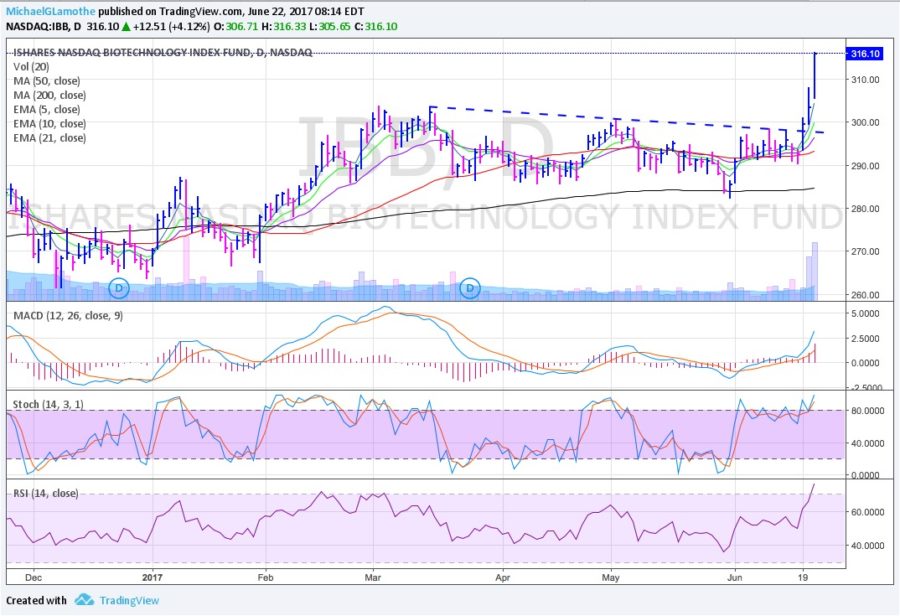When to Sell a Stock
Selling your stocks at the right time is arguably the most challenging part of trading. …and it is fraught with emotions!
There are times when we are wrong and we must exit at a loss – that is hard!
There are times when we buy strong stocks that perform very well… We tend to sell these too early because we doubt that the strength can last…
Then there is the pain of watching a winning trade turn into a loser because we fail to exit at all!
Have you made any of these mistakes before?
I have…
I’ve made all of them!
When to sell a stock is a tough question… But the real question is HOW do we stop making these mistakes?? We do it with a time-tested and proven approach.
Luckily, there are several…
Tested & Proven Approaches
 A tested and proven approach can help take the emotion out of the difficult decision of when to sell. There are both fundamental and technical approaches that can help us sell at the right time. We discuss both here.
A tested and proven approach can help take the emotion out of the difficult decision of when to sell. There are both fundamental and technical approaches that can help us sell at the right time. We discuss both here.
Fundamental Exit: Price Targets
If you use business fundamentals to make your investment decisions, you will typically set a price target based on your determination of fundamental value. If your fundamental analysis tells you that a stock trading at $10 is really worth $15, then it makes sense to buy it at $10 and sell it when it hits $15.
This is why you often hear fundamental analysis include a price target.
Technical Exits: Sell Signal
Technical analysts will wait for the market to give a sell signal. Some of these signals include a loss of momentum, reaching an overbought state, or suffering a breakdown on the stock chart. Technicians may set price targets based on price ceilings that the market has defined in the past. They may also simply wait for the market to give a signal that the buyers are losing their enthusiasm.
Whether you use a fundamental or technical approach, there are countless varieties that can be applied. This makes it a challenge to arrive at an answer to which approach is better. However, if we stick to a very basic set of competing definitions, it becomes possible to see the strengths and weaknesses of each.
Fundamental Exits: Pros & Cons
Let’s define a fundamental approach to selling as exiting a trade when the stock’s price is greater than its fundamental value. Put that up against the technical approach. Selling a stock when there is a signal from its trading activity that the stock is more likely to go lower than higher.
While the notion that we should sell a stock if its price is higher than its fundamental value makes a lot of sense, there are MAJOR problems in its application.
1st Problem:
Do stocks only rise to their fundamental value?
 History is filled with stories of stocks that have enjoyed amazing upward trends that go far beyond any fundamental analyst’s estimation of value. Consider shares of Tesla (TSLA), the electric-car manufacturer. This company makes about 20,000 cars a year (as a comparison, Ford makes about 2 million cars a year). TSLA has a market cap of about $20 billion dollars (that is $1 million of market cap per car for a company that sells its cars for around $100k).
History is filled with stories of stocks that have enjoyed amazing upward trends that go far beyond any fundamental analyst’s estimation of value. Consider shares of Tesla (TSLA), the electric-car manufacturer. This company makes about 20,000 cars a year (as a comparison, Ford makes about 2 million cars a year). TSLA has a market cap of about $20 billion dollars (that is $1 million of market cap per car for a company that sells its cars for around $100k).
No matter how you crunch the fundamental valuation models, it is not possible to justify the price that TSLA shares trade at. Even the company founder, Elon Musk, has said that he thinks the shares are overvalued. Yet, the stock has continued to enjoy a strong upward trend. A shareholder that used fundamental valuations would have sold the stock very early in that upward trend and left a LOT of money on the table.
2nd Problem:
 The second major issue for using fundamental analysis to determine an exit point is the actual assessment of what fundamental value is. There is no rule book which determines how the pricing model should look. Even if fundamental analysts use the exact same pricing model they could still arrive at very different valuations. This can happen because they may use different information to arrive at price.
The second major issue for using fundamental analysis to determine an exit point is the actual assessment of what fundamental value is. There is no rule book which determines how the pricing model should look. Even if fundamental analysts use the exact same pricing model they could still arrive at very different valuations. This can happen because they may use different information to arrive at price.
If you believe in market efficiency then you have to believe that the price a stock is trading at today is correct given the information that the public has to work with. The stock’s price in the future will not depend on what the market knows today. New information will determine where price goes in the future.
A good fundamental analyst has the ability to predict what the company’s value will be in the future. This is because they have information that the general public does not have. To be a good fundamental analyst requires the use of private information.
That is where good technical analysis comes in.
Technical Exits: Pros & Cons
 Most technical analysis uses market activity to assess what investors think of the company’s fundamentals. Momentum indicators like the MACD or moving averages judge whether the buyers or sellers are in control of the stock. Oscillators like the Stochastic or RSI determine whether the buyers or sellers have been too aggressive. They show if a stock is pushed up or down too quickly. These indicators have some use in analyzing the stock. However, like most fundamental analysis – they don’t provide an edge.
Most technical analysis uses market activity to assess what investors think of the company’s fundamentals. Momentum indicators like the MACD or moving averages judge whether the buyers or sellers are in control of the stock. Oscillators like the Stochastic or RSI determine whether the buyers or sellers have been too aggressive. They show if a stock is pushed up or down too quickly. These indicators have some use in analyzing the stock. However, like most fundamental analysis – they don’t provide an edge.
Since most of us do not have the expertise or insight to gather private information on a lot of stocks, it is easier to use technical analysis to figure out what the people who are doing really good fundamental analysis know.
What Are The Big Institutions Doing?
From the sell side, we need to look for evidence that those with the best information are selling for a reason. It is normal for stocks to have up and down moves in a long-term trend. What is key is to be able to figure out the difference between a pullback and a trend reversal. That is where good technical analysis comes in.
Stocks that are trending higher will form an upward sloping trend line. Simply draw a line connecting the price bottoms on the stock chart. As long as that line is not violated, the buyers are in control of the stock and the perception of fundamentals is improving over time.
Sell Signal: Broken Trendline
 A trend line that is broken implies that some investors have information which justifies aggressive selling. We have to listen to those investors so sell your winners when their upward trend line is broken.
A trend line that is broken implies that some investors have information which justifies aggressive selling. We have to listen to those investors so sell your winners when their upward trend line is broken.
Sell Signal: Support Is Breached
The second approach to technical selling is to establish a range of price volatility that is normal for the stock and plan to sell if the stock moves down more than that price volatility range tolerates. This is a sort of trailing sell signal concept which allows the investor to lock in more profit as the stock moves higher by establishing a higher floor price. If the stock pulls back to hit the floor it is time to exit.
Sell Signal: P&L Based Exit
Other people sell when a stock drops below their predetermined risk level. Meaning they say I don’t want to lose more than X% on this stock from entry to exit and then raise the stop as the stock rallies.
Trailing stops can be used and adjusted for any of these strategies.
There are many other sell signals but this is just an intro to some of the most common.
This approach is not without its faults. The most common mistake that traders make is taking a too short-term view for the trading style that they are applying. If you are a longer term trader looking for entry signals on a daily chart then you should not be looking for trend line breaks on an intraday chart. It is probably best to look for a longer term entry signal using a weekly chart.
As good traders say, the profit is in the patience.




